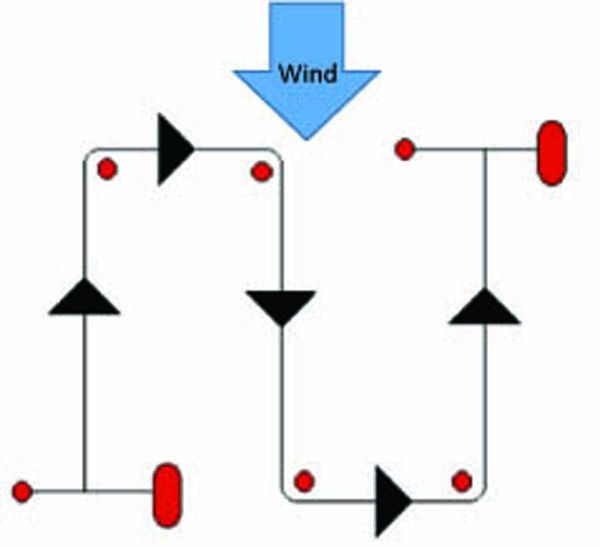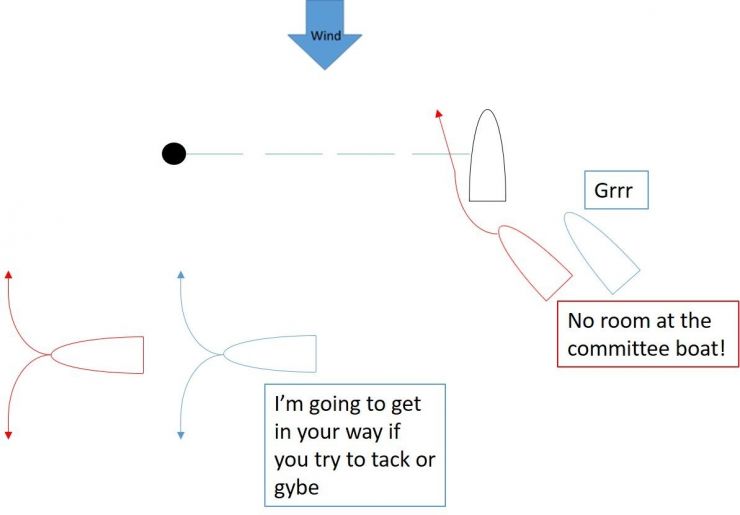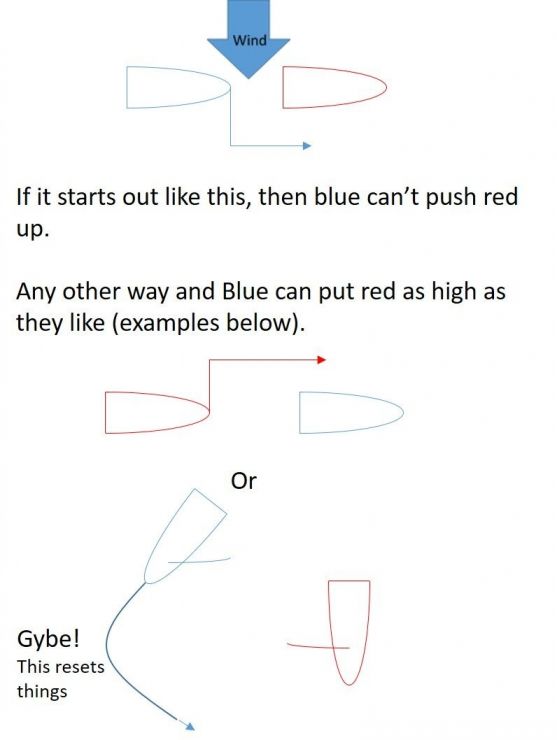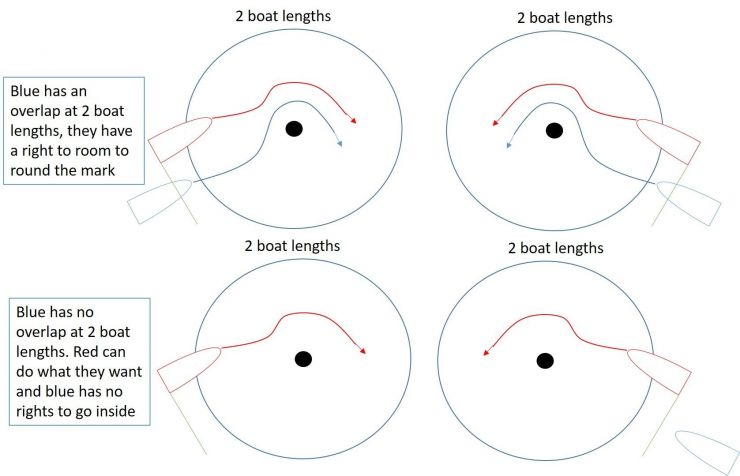Ten Minute Guide to Team Racing
This 'ten minute guide' was prepared by Peadar (Peter) Ó Coileáin and Joe Penhaul Smith in 2019 for those less experienced in team racing, including those prior to university or freshers wanting to get their heads around what it involves.
What is team racing?
Team racing is actually pretty simple to understand. Two teams start off, race round a course, and the team that has the lowest number of points when they cross the finish line wins.
Normally, teams either consist of two or three boats.
In two-boat team racing, the team who have the boat in 4th place lose the race. It’s as simple as that. 1st and 4th is a losing combination. The boat in 1st had better do something to get their team mate back into the game.
In three-boat team racing things are a little more complicated. 1st + 2nd + 3rd + 4th + 5th +6th adds up to 21, so if your positions add up to 10 or less, your team wins. You quickly get used to which combinations give you a win, and which ones give you a loss, but as a quick summary, 1-2-anything wins, 1-3-anything wins, and also 1-4-5, 2-3-4 and 2-3-5. Anything else is a loss. There are specific plays for different situations, but the basic rule is generally if you are in a losing combination, you want to compress the race, slow things down, and create opportunities, whereas if you are in a winning combination, you want to stretch things out and keep the race moving quickly.
The course
Before we go into any specifics, it’s a good idea to be familiar with the team racing course.

It’s fairly simple. Standard start line, then two marks to your right, two marks to your left, up to the finish, and make sure your team get there before the other team. So how is this done?
Manoeuvres
- The Start
The start of a team race is fairly similar to a fleet race. You have a line and a countdown from three minutes, and everyone tries to start as cleanly as they can. The difference with a team race is that if you can stop someone else getting a good start, you go for it. There are a few ways to do this, but the best two are probably to sit behind them so they can’t tack or gybe, or else get an overlap to leeward of them, and push them over the line (and remember, there’s no right to room at the committee boat)
- The Beat
As well as your normal fleet racing stuff, such as sitting above someone and stealing their wind, you have the option to take them miles off beyond the layline by not allowing them to tack. Also, remember you’re leaving the windward mark to starboard, so watch out for boats coming in on starboard as well!
- The Reach
The rules here are the same as in fleet racing again. But there is one that comes up a lot in team racing that barely appears at all when you’re racing in a fleet. This is the concept of luffing rights and proper course. Normally, if you’re a boat to leeward, you can push a boat to windward all the way up to head to wind, and there’s nothing they can do about it. The only exception to this is if the boat to leeward came from clear astern of the boat to windward. This resets if either boat tacks or gybes, which is important on the run! In this case, the windward boat still has to keep clear, but the leeward boat can’t sail above her proper course. This basically means the course they would have sailed had no other boats been nearby.
- The mark
The water at the mark rule is the same as in fleet racing. If you have an overlap inside when you enter a two boat length circle from the mark, you have the right to go inside. If you don’t have that overlap at that exact point, no rights, even if you get one later.
This means that if you are clear ahead of someone, you can enter the two boat lengths, and then stop. Nobody can get water on you now, so any opposition boats have to sail around the outside while you let your team mates through.
- The run
This is where simple rules lead to complex situations.
You have the option to be on either port or starboard, and also windward or leeward boat (remember, you can push people up unless you came from clear astern, and gybing resets things) - The penalties
Races are normally umpired. This means that if you break a rule, it will probably be seen.
If you want to bring in an umpire, shout “protest”, and show a red flag. The umpire should then give a decision. If you think you have broken a rule, you can exonerate yourself with a 360 degree spin. If an umpire has to make a decision against you, it’s a 720 degree spin, so there’s an incentive to be honest!
The Format
Things usually move fairly quickly. Races are only about 5-10 minutes in length, but you’ll end up doing a lot of them throughout a day.
There’ll be a race schedule telling you when your races are, and who they’re against. It’s your responsibility to be ready to change over into boats when it’s your turn to race. If you’re lucky there’ll be someone calling your team name as well.
The most important thing
Team racing is hectic, fast paced, and great fun. Enjoy it, get out there, make mistakes, lose races, because there’s always at least one moment that makes your day!
See also copy of "Ten Minute Guide to Team Racing" as a pdf
About the authors
Peter started team racing as an undergraduate, proudly propping up bronze fleet with Trinity College Brown. Stints at Edinburgh and Glasgow met with slightly more success and a couple of appearances at BUSA finals. He is now the Chair of the Scottish Team Racing Association (https://www.facebook.com/STRASailing)
Joe is the BUSA development officer 2019-2020. His team racing career started at Newcastle with minimal success. Since then he moved to Scotland and founded UHIWWC, with rather more success. He team races enthusiastically (read badly) and makes occasional appearances further south with the Exiles SC and Staunton Harold SC.